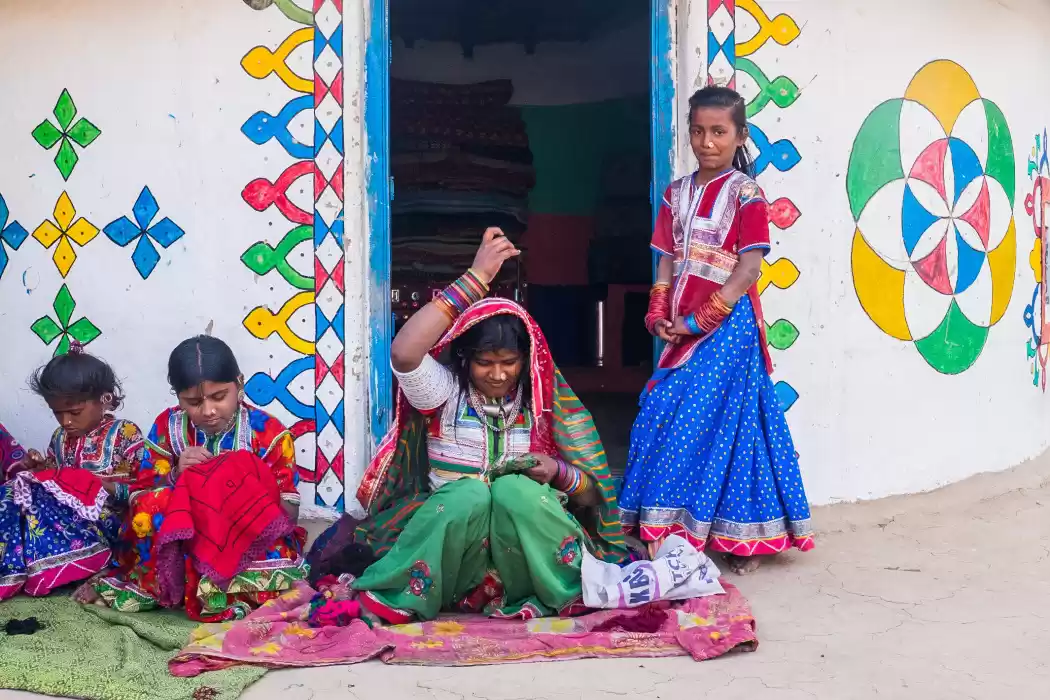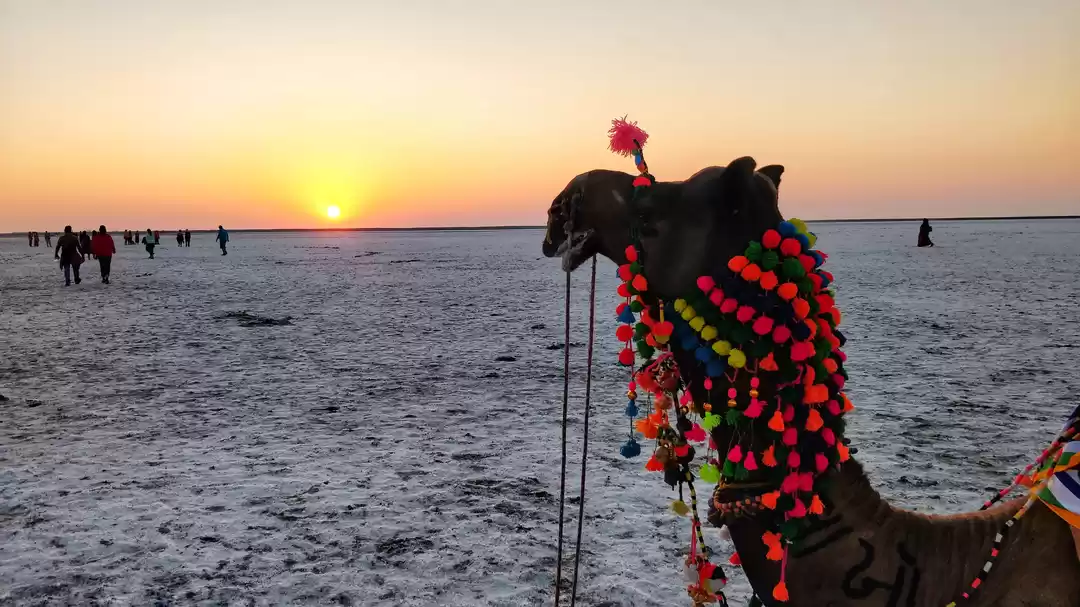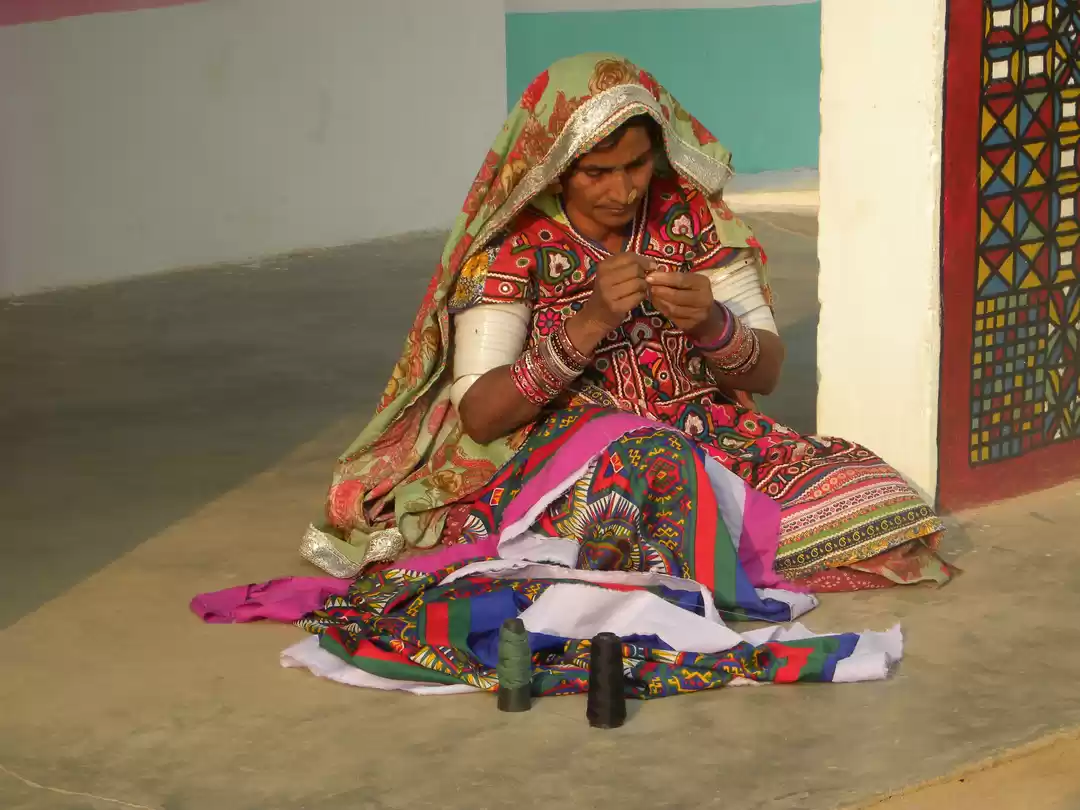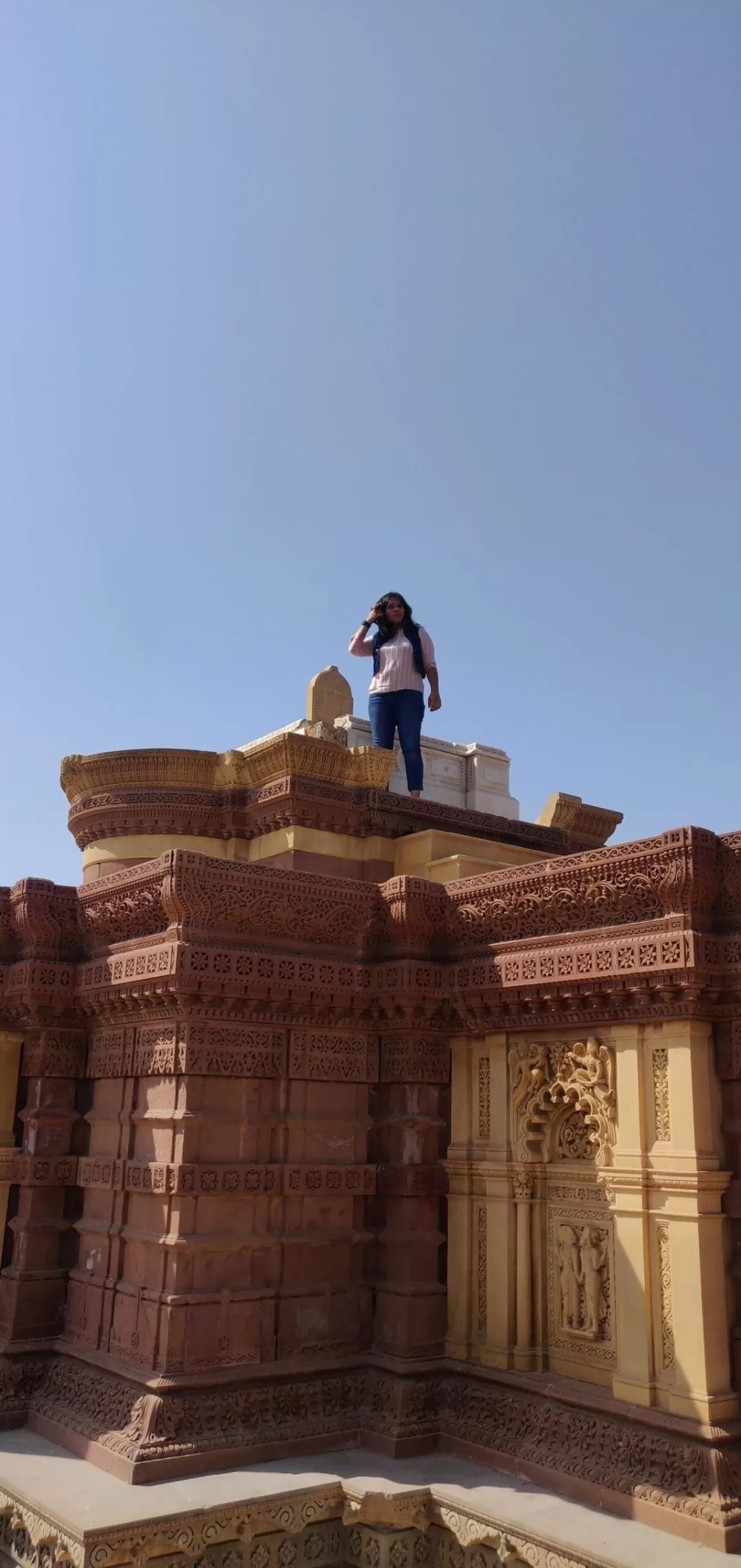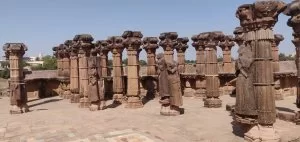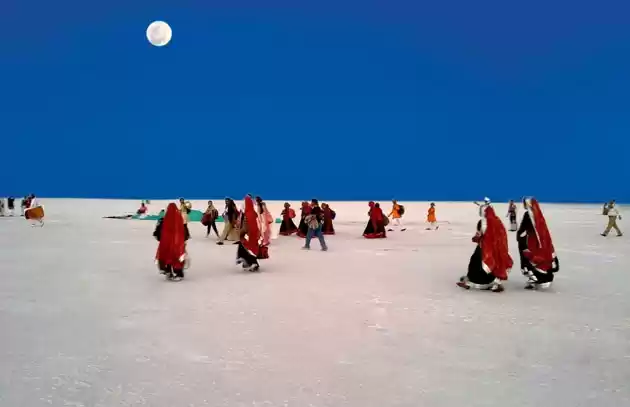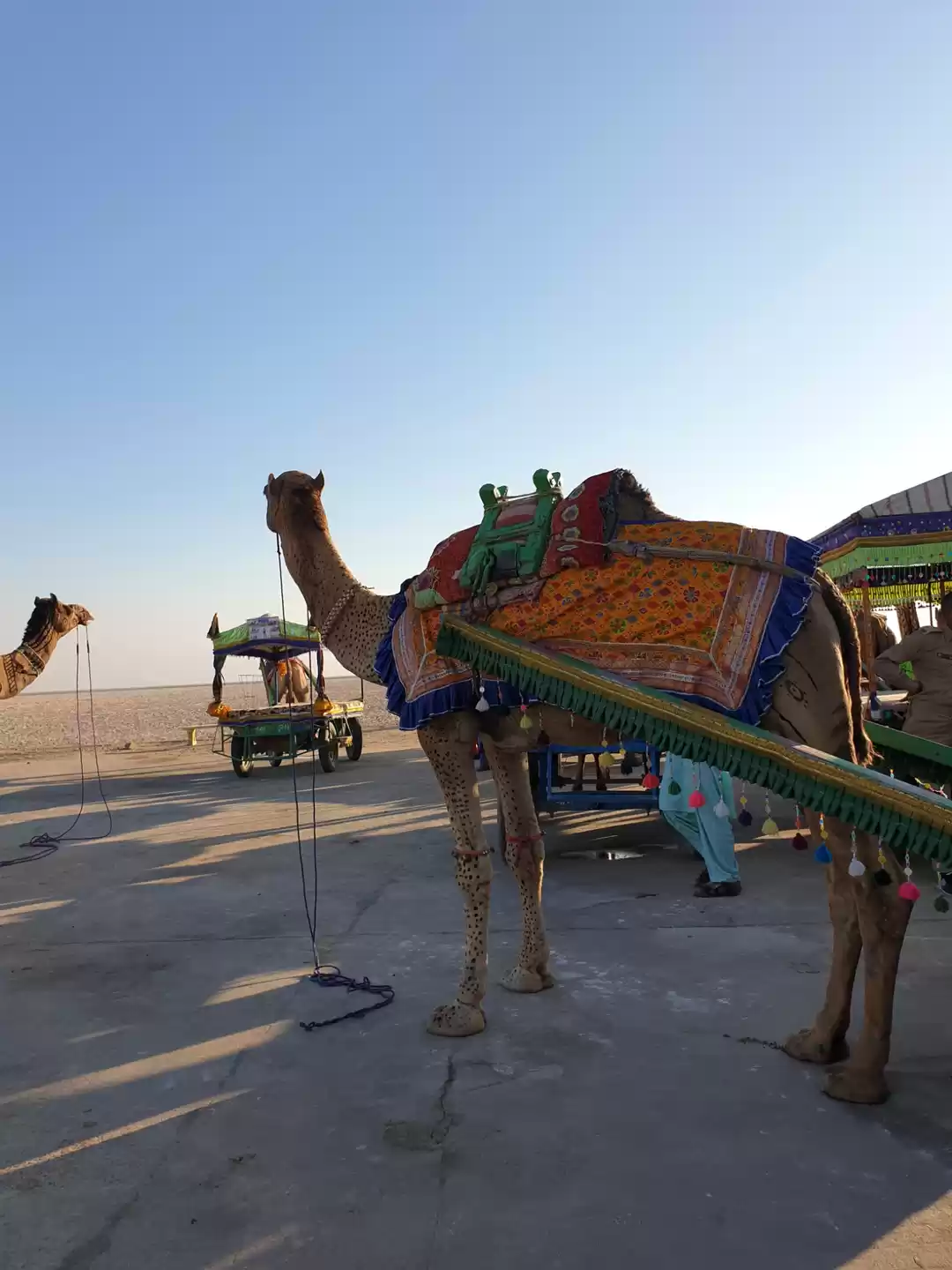"Who knew that two minutes of a deadly disaster- could turn our lives upside down. It was Republic Day and I didn't sleep all night because I was singing for the first time in the school assembly the next morning", Geetha was reminiscing about the 26th January 2001 earthquake. We sat in the shade of the neem tree on the polished cow dung floor, waiting for the artisan women to come back from their lunch break.

"Our school was not affected by the earthquake, after hearing the news we immediately rushed back home only to see my parents wounded, sitting amidst the jagged debris, crying in helplessness," she added. We were silent for a minute that felt like forever before I gathered my voice to ask "And then?" "We had to be united, the earthquake bought the entire village together! We worked together and started clearing things away, to find and help each other. Then there were volunteers from across the country and a little help from the government. My mother would relentlessly work on embroidery in the kitchen. Art was her respite during those difficult times. Most of the artisans did the same, pouring themselves into creating handlooms - the only thing they knew- to clamp down the sad memories of their lost friends and family, their wrecked homes and broken looms!"

Most textile artists in Kutch are not new-age artisans. Though the art form, techniques and design changed over time, the skill is an age-old practice that has been an integral part of the Kutch lifestyle for generations. Back when there was a barter system, the artisan community used to make turbans and shawls for the farming community in exchange for food staples. The 1960s changed everything- the Kutchi craftwork, especially the textiles, got the light it deserved. The Kutchi shawls, stoles and fabrics made their way to the cities in India. In the '80s, journalists, designers, and the textile revolution came to Kutch. Exports started to pick up.
However, it was not a happily ever after story. The strong community of artists stood up to bulk textile manufacturing industries with unbridled belief in their artwork, they overcame the tenets of untouchability with their strong moral values and earned respect, they overcame a devastating earthquake, rebuilt everything again, and learned how to keep up with the markets by modernising their designs without taking away the traditional charm.
ShamJi Vishram Valji Bhai, a master weaver national award winner from Bujodi craft village says "This is not a business for us. Bhujodi is not a bazaar, it's our lifestyle, its a generational art which we got as a treasure from our parents and the same will be passed on to our children. Our textiles have life in them. Every weaver prays every day that what they are weaving today will bring happiness and peace to whoever wears them throughout their life." The younger generations have a different perspective to take the legacy ahead. Most of them go to bigger cities to study, but the majority of them come back.
26-year-old Geetha helps her community by creating a digital presence. She says "I had no reason for me to stay in a metro city when I see youngsters from prestigious institutes like NIFT, Parsons, New York, and Berkely come to Kutch to do internships and research!"



Some of the Artist villages you should visit Bujodi village (specialized in spinning, intricate weaving of shawls, stoles, carpets and more), Ajrakpur (specialized in block printing) Gadhinugahm and Banni (specialized in building mud huts, making quilts and patchwork bedsheets), Sumrasar and Dhordo (specialized in embroidery)

Living and learning design center (LLDC) is a studio and gallery that showcases the art of locals, including pottery, metal bells, textiles and more.
On one of the evenings visit the bustling Shroff Bazaar near Darbargadh's palace complex, a place where you can see merchants selling Kutchi textiles, antiques, vintage furniture and what not!
Our hosts from Bhuj house recommend going to Saifee's - Bhuj's institutionalised ice-cream parlour and Farsan Dunia - a lovely bakehouse that sells traditional sweets, savoury and original Khavda.
Antique furniture: Bhuj, in general, has a lot of street-side merchants who sell old doors and windows. Most of them are collected during the 2001 earthquake. When I told Shiraj how fascinated i was about the old furniture he suggested me to visit Ramnikbhai of neighbouring Mirzapur. It was a great experience visiting his workshop. He has this huge collection of old doors and windows. He also restores old furniture and facilitates transporting them to any city in India.


Writing this post was made possible with the help of our wonderful hosts at the BhujHouse. Thank you, Katie and Jehan, for choosing to share your ancestral home with passionate, responsible travellers. Thank you Shriraj for connecting me with the local artists.
About The BhujHouse: A traditional Parsi courtyard homestay in the heart of Bhuj. A 150-year-old home that is still standing after the devastating earthquake in 2001.
Also read: Exploring Kutch Beyond The White Rann
Tags: Artists of Kutch; Kutch tourism; Kutch destinations, Bhuj; Best things to do in Kutch; kutch embroidery; Rogan art; Lippan art
Connect with me on Instagram @bhavya.vatrapu
















